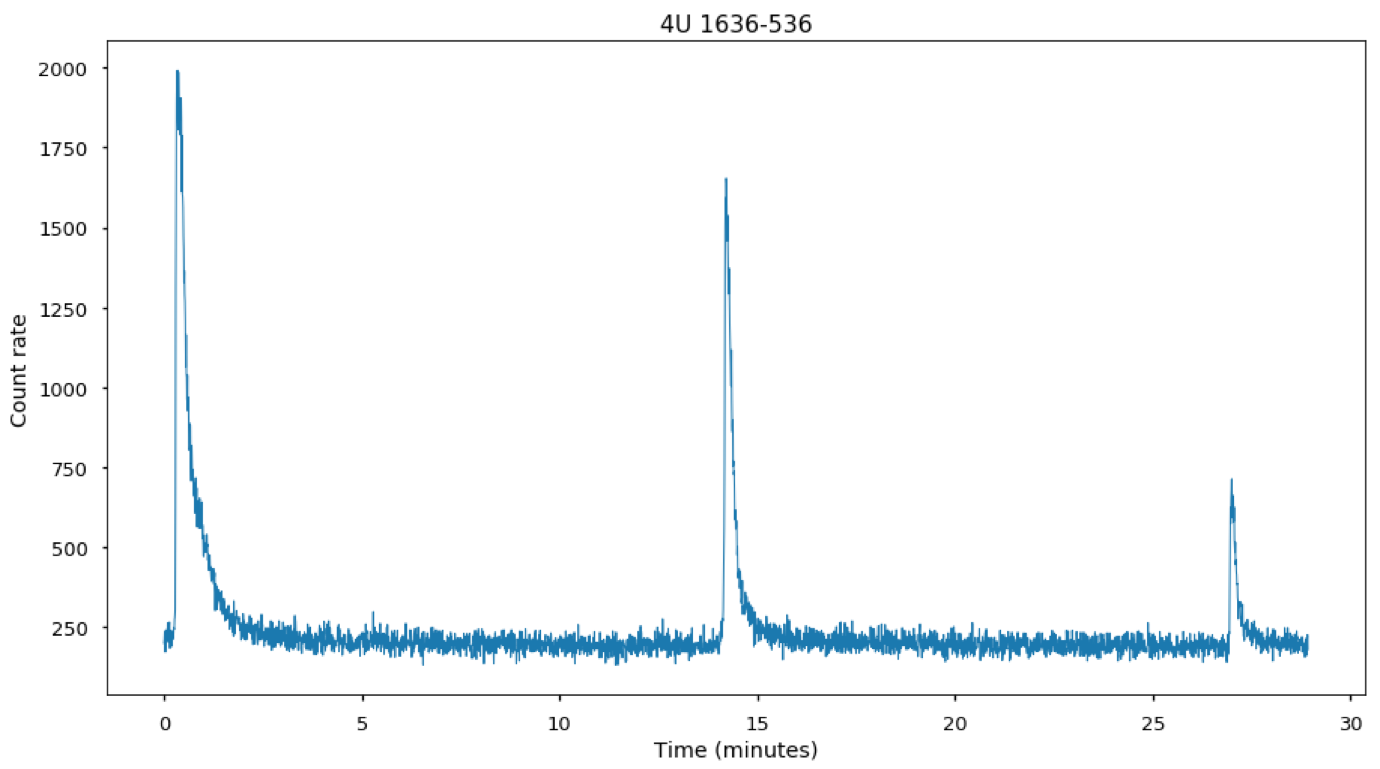NICER / ISS Science Nugget
for February 2, 2018
NICER observes rare short-recurrence X-ray bursts
The gravitational pull of a neutron star is sufficiently strong that any matter landing on it will be rapidly compressed. This compression is so extreme that the outer layers of the atmosphere become dense enough to trigger thermonuclear fusion. Once ignited, this fusion reaction rapidly spreads over the entire neutron star surface, burning up all available material and producing a brief, but intense, burst of X-ray emission.
In X-ray binary systems an orbiting companion star provides a steady supply of fresh material to accrete on the neutron star. Still, it typically takes many hours to several days before a neutron star atmosphere is replenished to the point that it can reignite.
On January 14th, NICER observed a triplet of X-ray bursts in the X-ray binary 4U 1636-536, each separated by only 13 minutes (see figure, next slide). Such ‘short recurrence bursts’ are rare events, accounting for less than 5% of all X-ray bursts ever observed. Being spaced too close together for the atmosphere to have recovered, the study of these short recurrence bursts provides a handle on uncertain convective mixing processes that are predicted to occur there.

Figure:
NICER X-ray lightcurve of the X-ray binary 4U 1636-536, showing three X-ray bursts each separated by only 13 minutes
<< Previous
Main Index
Next >>